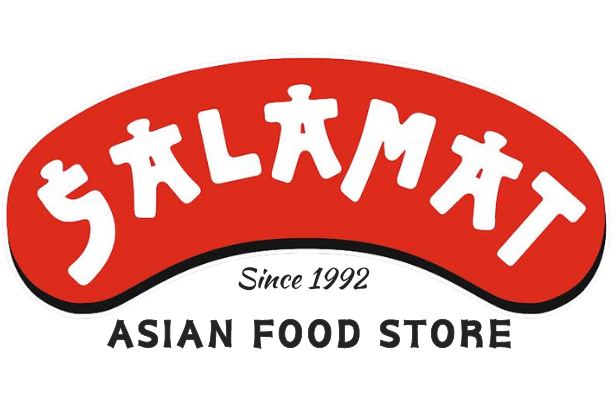Types of vinegar and how to use them!

The word vinegar comes from the French "vin aigre" or sour wine.
It is defined as a liquid suitable for human consumption and containing a specified amount of acetic acid and water. Vinegar is low in calories and nutrients. Depending on the type, one tablespoon of vinegar contains from 2 to 15 calories.
RICE VINEGAR : Rice vinegar is made from fermented rice. The sugars in the rice are converted into alcohol (rice wine) and then, through a second fermentation process with bacteria, into the acid we know as vinegar. The result is usually much less acidic and milder than pure distilled white vinegar or those made from grape-based wine or malt, making it a subtle addition to sushi, marinades, sauces and salad dressings.
Not only do the types of rice vinegar vary, but so do regional styles: rice vinegar is a central condiment in Chinese, Japanese, Korean and Vietnamese cuisine, so they can vary slightly.
- White Rice Vinegar: This is the basic, all-purpose rice vinegar. It is clean, with a subtle texture.
- Seasoned rice vinegar. Mainly used for sushi rice, it combines white rice vinegar with sugar and/or MSG for added flavor.
Pro tip : There are some recipes that mention mirin as a substitute for rice vinegar to season sushi rice, but traditionally, mirin is not needed to make sushi. The acidity level of mirin is too low and it is too sweet to give the perfect taste in sushi rice.
- Brown rice vinegar. Like its parent grain, brown rice vinegar has a few more nutrients, along with a darker color. It is often mild enough in flavor that it can be used interchangeably with white rice vinegar.
- Black rice vinegar. You may have come across black rice vinegar as a dipping sauce. Thanks to the combination of black glutinous rice with wheat and other grains such as sorghum, the result is rich in umami.
Signs that rice vinegar has gone bad: it will become darker and thicker, similar to balsamic vinegar.
APPLE VINEGAR : Apple cider vinegar is mostly apple juice, but the addition of yeast turns the sugar in the juice into alcohol. This is a process called fermentation. Bacteria convert the alcohol into acetic acid. This is what gives vinegar its sour taste and strong smell.
Popular in Korean cuisine, vinegar is used as a condiment for cold dishes such as radish salad. In addition, apple cider vinegar is ideal for making marinades and sauces for meat or fish. In Korean cuisine, apple cider vinegar can be used as an alternative to brown rice vinegar.
It also has many beauty, household and culinary uses. These include cleaning, washing hair, preserving food and improving skin function.
DISTILLED VINEGAR 5% ACIDITY: Distilled vinegar can be prepared from any type of vinegar. As its name suggests, it is distilled from ethanol. "Distilled" clearly means that the liquid component is separated from the base mixture. The acid percentage is defined as the number of grams of acetic acid per 100 mL of vinegar. So the 5% vinegar you buy from the store has 5g of acetic acid per 100mL. If you include it in a recipe, it should be used in very small amounts.
Both distilled and white vinegar can be used in cooking, cleaning, food preservation, and for medicinal and laboratory purposes. However, since white vinegar is stronger than its counterpart, it is more suitable for cleaning and sanitizing.
SUGAR CANE VINEGAR : Sugar cane vinegar is a mild vinegar often used in Philippine cooking and on many islands where sugar cane is grown and harvested. One of the classic dishes is adobo.
In this category, there are two types available: sukang maasim, or white sugarcane vinegar, and sukang Iloco, which is made by fermenting an alcoholic beverage made from molasses called basi. Also there is Sukang Maanghang which is seasoned vinegar with spices and chilies.
Many describe the taste as sour (sour is arguably the main element in Filipino food), but fresh and like its light flavor in a variety of foods. Cane vinegar can be used as a fruit salad dressing to complement the sweetness of the fruit.
COCONUT VINEGAR : Coconut vinegar is a staple in Southeast Asian and Indian cuisine that is quickly gaining popularity in the West. It is a natural product and comes from the juice of the coconut (known as Tuba). This juice is fermented for 8-12 months and naturally turns into vinegar.
Coconut vinegar has a cloudy, white appearance and a slightly milder taste than apple cider vinegar. It can add a touch of sweetness to salad dressings, marinades, soups and hot dishes.
WHEAT VINEGAR : Made from a blend of alcohol derived from wheat, rice, corn, and lees (the dregs that remain after sake is fermented and filtered), this vinegar has a milder flavor than regular rice vinegars and is perfect for making sushi vinegar. It can also be used in salad dressings, Japanese stews or marinades to tenderize meats. A great Japanese staple.
“Keep the unopened bottle of vinegar out of direct sunlight. Store your vinegar in a cool, dark place like your pantry or a kitchen cupboard. Once opened, keep your vinegar in its original container, tightly sealed. If stored properly at room temperature, it will generally remain at its best for about 2 years."
Find the right vinegar for your next recipe here!
